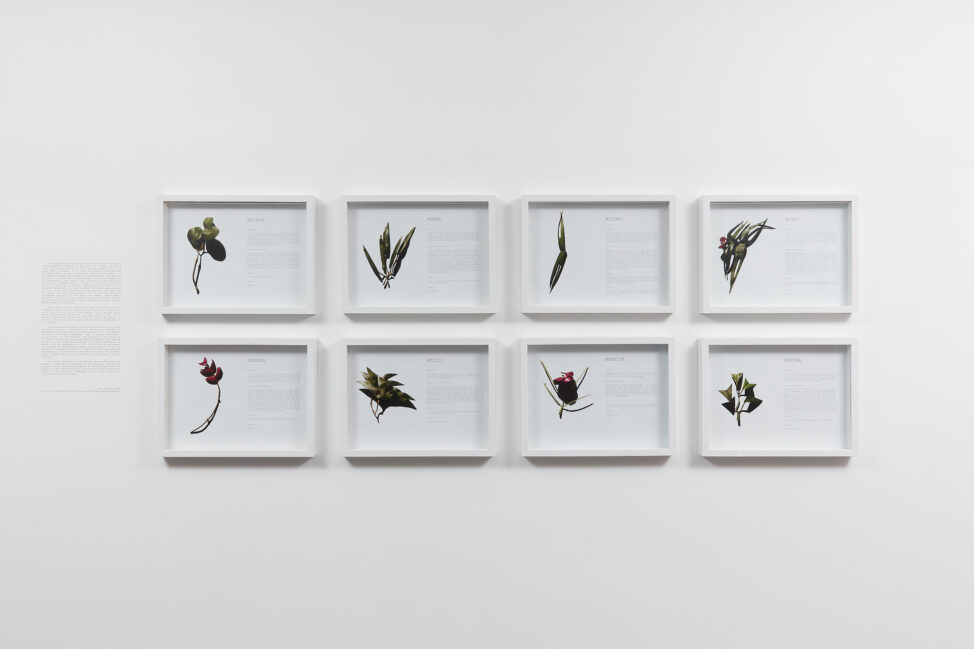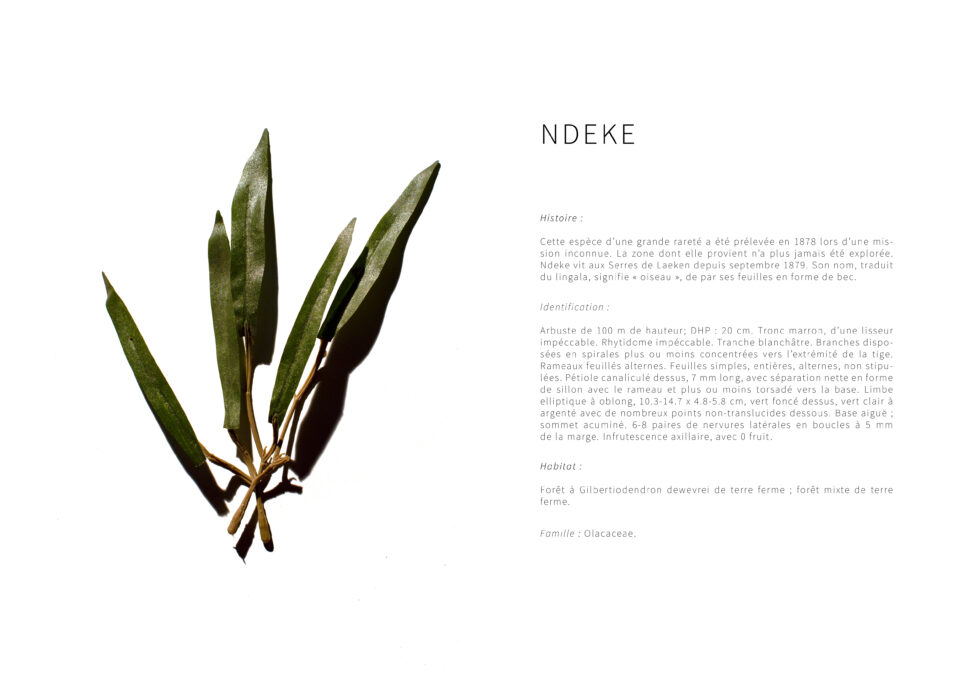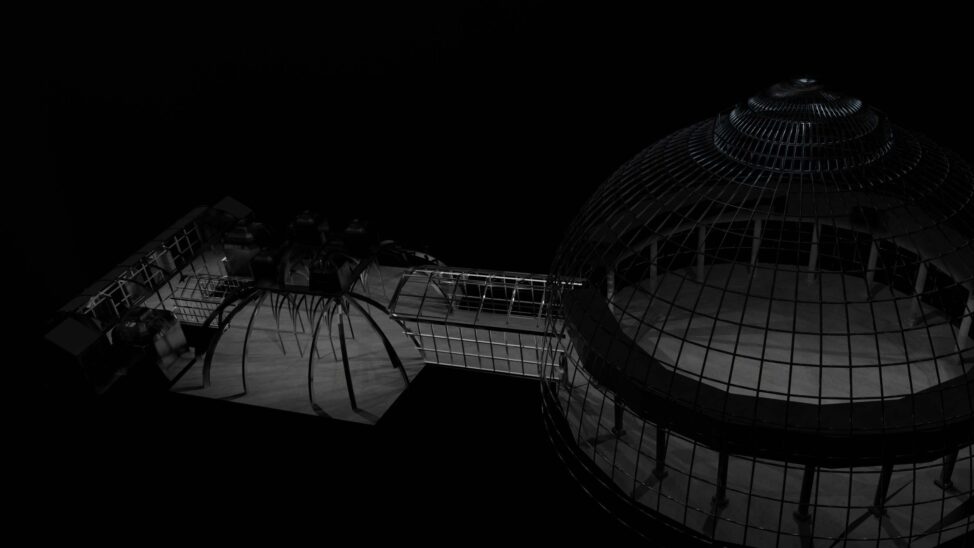Anna Safiatou Toure
FR-MLI
-

Herbier du département congolais des Serres Royales de Laeken - 2019-2020 - 8 photographs framed, 30x40 cm each -

Planche Ndeke - 2019-2020 - Detail, Herbier du département congolais des Serres Royales de Laeken -

Caldarium - 2019-2020 - Screenshot, Video, 10 min,
Anna Safiatou Touré is a Franco-Malian multidisciplinary artist based in Brussels, currently resident at the Fondation Carrefour des Arts. Anna Safiatou graduated from the Beaux-Arts de Nantes Saint-Nazaire and ENSAV La Cambre in photography. She is the winner of the Prix Médiatine 2022 and the Fonds Roger de Conynck 2023. Using a variety of media, she creates links between the journeys of uprooted young people and the places that surround them. Crossing this personal, historical and cultural melting pot also enables her to fill in empty or unanswered spaces. Conceptualizing this absence, writing narratives and constructing new proofs enables her to make invisible parts of our history heard. This research echoes a certain poetry of the void. Couldn’t the world be told upside down, like a stencil, from the side of the outline?
Herbier du département congolais des Serres Royales de Laeken, 2019-2020
The herbarium of the Congolese department (…) is a fictitious reconstruction of a herbarium that could be that of the Congolese greenhouses in Laeken (Belgium). This gesture is a direct reaction to the limited accessibility of the Laeken greenhouses year-round, the lack of a plant census, the building’s colonial history and Anna Safiatou’s interest in the plant as a living, political element conveying history. Today, the Serre du Congo in Laeken is home to subtropical plants that replace the original Congolese plants, which were unable to withstand Belgium’s climatic conditions.
Caldarium immerses visitors in the very heart of the Laeken greenhouses. This Belgian heritage landmark, created in 1873 by Alphonse Ballat for King Leopold II, boasts one of the world’s largest collections of exotic plants. The aim is not to highlight the beauty of this exceptional building, but to question its political status throughout history, and the role it still plays today.